For C-suite executives, the decision of when to plan for the next commercial lease is a critical one. A commercial lease can significantly impact the growth and success of your organization, making strategic planning a necessity. In this article, we will explore why preparing an 18-24 month timeline is optimal for planning your next commercial lease and provide insights to help you make informed decisions that align with your company's goals and vision.
The Importance of Strategic Planning
Strategic planning is a crucial aspect of any business decision, and securing a commercial lease is no exception. As a C-suite executive, you understand that your company's physical location is more than just a space; it's a reflection of your brand, a hub for employees and customers, and a significant investment. Thus, it is essential to approach the process with a long-term vision and a well-thought-out strategy.
Factors to Consider When Planning Your Next Commercial Lease
1. Location Analysis
Selecting the right location for your business is paramount. Consider factors such as proximity to your target market, accessibility for clients and employees, local business regulations, and the availability of amenities. Conducting a thorough location analysis may take time, but it ensures that you choose a site that enhances your company's visibility and growth potential.
2. Space Requirements
Analyze your current and future space needs based on projected growth and business plans. Avoid leasing a space that barely accommodates your current operations but falls short when your business expands. A well-planned 18-24 month timeline allows you to assess your spatial requirements, negotiate with landlords, and secure a space that aligns with your long-term needs.
3. Budget and Financial Planning
Leasing commercial space is a significant financial commitment, and a clear budget is essential. Consider all associated costs, such as rent, utilities, maintenance, and any renovations or customizations you may need. By planning 18-24 months in advance, you can allocate resources effectively, avoid unforeseen financial strain, and negotiate favorable lease terms.
4. Negotiation and Legal Processes
Negotiating a commercial lease can be a complex task, involving legal documentation and potential concessions from both parties. Allowing ample time for negotiations ensures that you can carefully review the terms, seek legal counsel if necessary, and reach a mutually beneficial agreement with the landlord.
5. Market Conditions
Commercial real estate markets can fluctuate over time, affecting leasing rates and availability. By starting the planning process 18-24 months in advance, you give yourself the advantage of monitoring market conditions, identifying potential opportunities, and making informed decisions based on prevailing trends.
6. Exit Strategy
While planning for a new lease, it's crucial to have an exit strategy in place for your current space. This could involve subleasing, early termination negotiations, or accommodating a new tenant. An extended planning timeline allows for a smoother transition between locations, minimizing disruptions to your business operations.
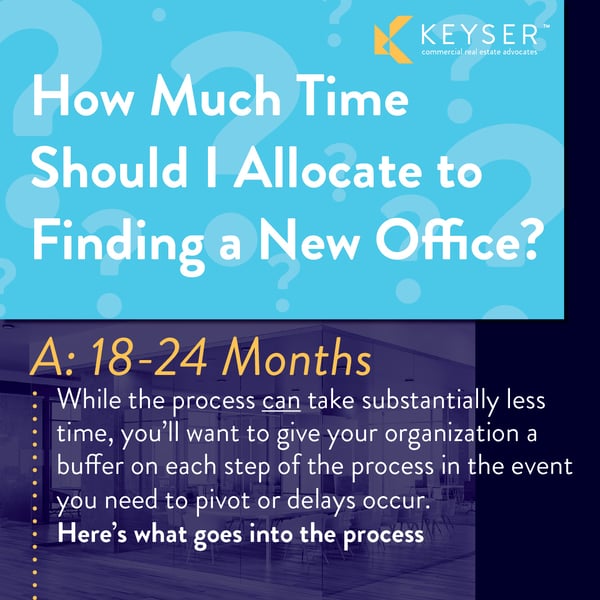

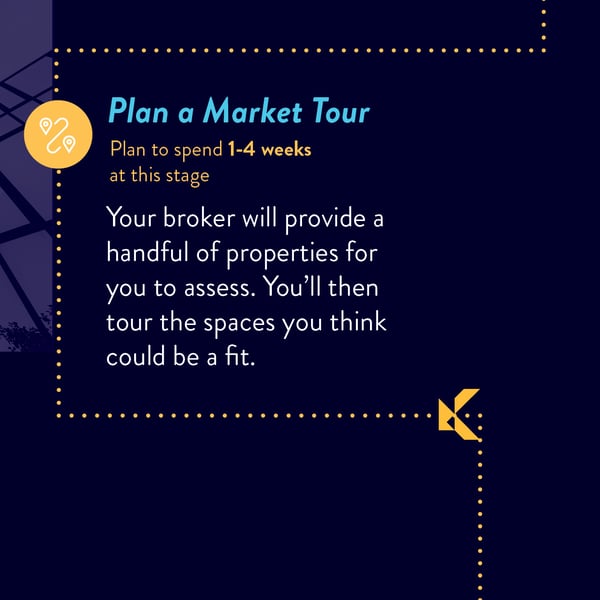
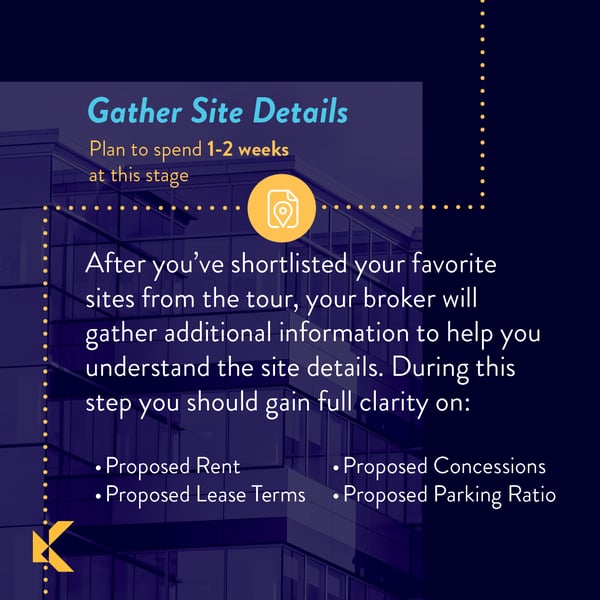
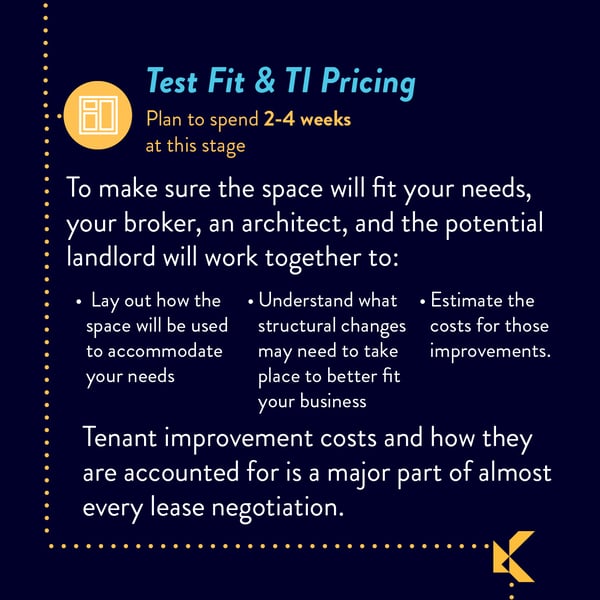
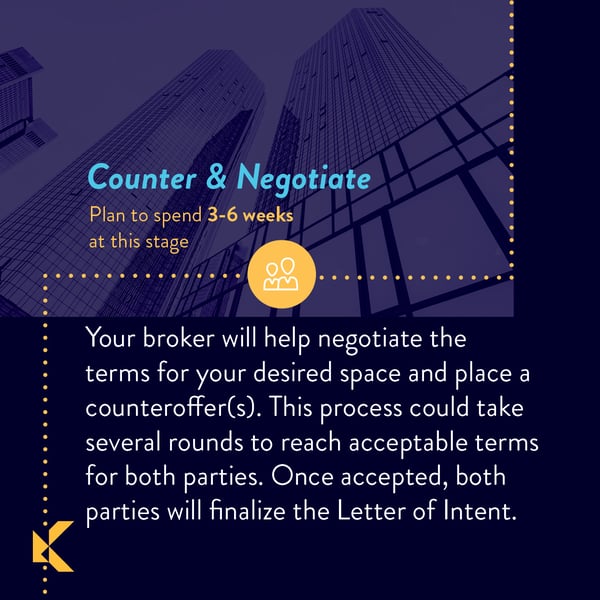
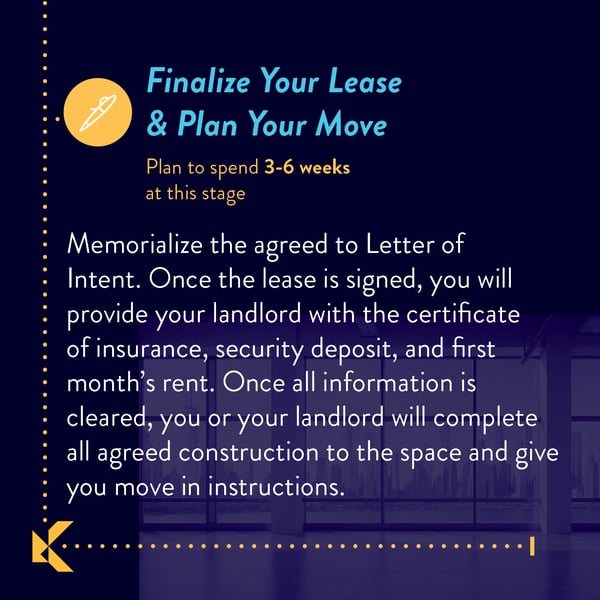
1. Increased Negotiation Power
Landlords often prefer tenants who plan ahead as it demonstrates commitment and reliability. With an extended planning timeline, you position yourself as a desirable tenant, giving you more negotiation power to secure favorable lease terms.
2. Time for Due Diligence
Rushing into a lease agreement without thorough research can lead to regrettable decisions. By providing sufficient time for due diligence, you can explore multiple options, compare properties, and select the best fit for your company.
3. Flexibility and Less Pressure
An 18-24 month planning period provides flexibility in exploring different locations, lease durations, and financial arrangements. With reduced time pressure, you can make well-considered choices that align with your long-term business strategy.
As a C-suite executive, planning your next commercial lease should not be taken lightly. Strategic planning, with an 18-24 month timeline, empowers you to make informed decisions that positively impact your organization's growth and success. By carefully considering location, space requirements, budget, negotiation processes, market conditions, and exit strategies, you position your company for a successful and seamless transition to a new commercial space. Remember, investing time and effort in planning now will pay off in the future, ensuring that your next commercial lease is a strategic advantage for your business.





